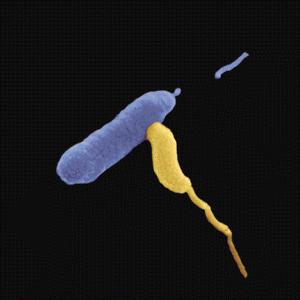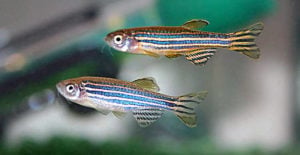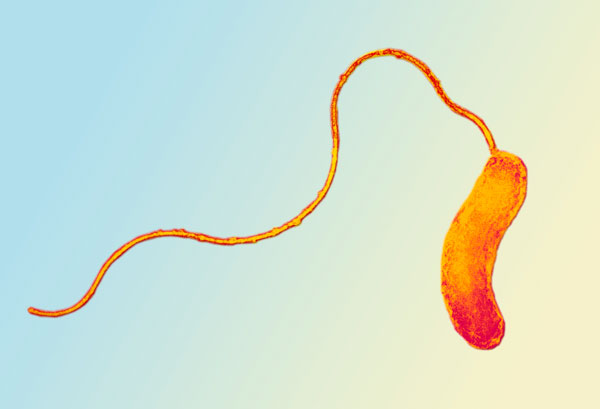We may have found a new ally in the fight against antibiotic resistance… though it might not be what you’d expect. Researchers have found exciting evidence to suggest that a predatory bacteria, Bdellovibro bacteriovirus, could be used to deal with dangerous bacterial infections as a ‘living antibiotic’.
The study, published on the 23rd November in Current Biology, was carried out by researchers from Imperial College London and the University of Nottingham. It showed that B. bacteriovirus was able to significantly improve the survival of zebrafish larvae after a lethal infection of Shigella flexneri.
B. bacteriovirus is a bacteria which survives by seeking out other gram-negative bacteria, like Salmonella enteritidis, and attaching itself to their cell surface. It then works its way inside the target bacteria, where it breaks down its prey’s cellular components and uses them to help itself replicate. Eventually, many progeny (copies) of B. bacteriovirus burst out of the dead cell and start the search for more prey bacteria.

Initially, the researchers injected the predatory bacteria into zebrafish larvae (Dario rerio) to check whether the bacteria could last long enough without being destroyed by the zebrafish’s immune system, and also to see if there were any adverse side effects. What they found was that levels of the bacteria started to drop after about two hours of infection, and after 48 hours they had been almost completely removed. What this seems to suggest is that there isn’t a risk that the predatory bacteria would grow uncontrollably once applied – when B. bacteriovirus’s prey aren’t there, it isn’t able to replicate and immune cells could start to drop the existing numbers. Zebrafish injected with the bacteria also didn’t seem any worse for wear, with movement and growth apparently unaffected. Taken together, the researchers concluded that this theoretically meant the B. bacteriovirus could be applied to an infected patient and would last long enough to kill dangerous bacteria, before themselves being removed by the patient’s own immune system.

The study was then able to show that the predatory bacteria is actually able to save zebrafish infected with Shigella flexneri, a nasty organism often associated with food poisoning which, annually, causes approximately 160 million illnesses and one million deaths. When they injected zebrafish with a lethal dose of S. flexneri, only 25% could survive past three days. But when the fish were also treated with B. bacteriovirus, this number rose to more than twice that, with 60% being saved.
The predatory bacteria also appeared to actually cooperate with the zebrafish’s immune system to clear the Shigella infection. While B. bacteriovirus could still reduce the number of Shigella cells in mutant zebrafish – which lacked normal levels of leukocytes – this reduction was greatly diminished when compared to what was seen in fish with a normal immune system. This suggests that B. bacteriovirus can get the best results when it works together with the immune system.
Why could this cooperation be key? It may well be that the predatory bacteria is able to act in a way which draws the attention of the immune system. Dr. Elizabeth Sockett, a member of the research team from the University of Nottingham explains: “It seems that Shigella pathogens are evading the immune system, but when Bdellovibrio is there, it is releasing broken parts of Shigella and that is giving extra signals to the fish that it should be dealt with.”
This study represents the uncovering of a potentially lifesaving alternative to antibiotics as we traditionally know them, at a time when alternatives are sorely needed. Importantly, B. bacteriovirus doesn’t seem like it would be a threat to humans – the paper points out that signs of the bacteria have been found in gut samples collected from healthy children. Potentially, because of how easy injecting the bacteria is, it could be used as an effective way of treating specific points of infections, like a wound.
Dr. Serge Mostowy, another member of the team, commented that the study is “an important milestone in research into the use of a living antibiotic that could be used in animals and humans.”
